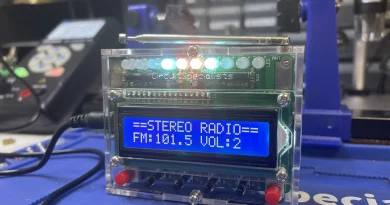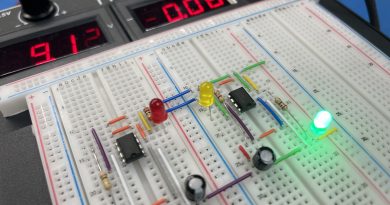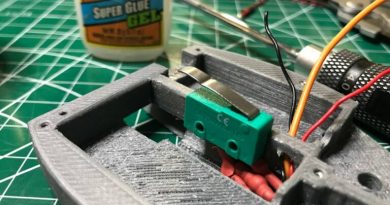How to Make Printed Circuit Boards
Hobbyists, Designers, and low volume manufacturers can make reasonable quality Printed Circuit Boards (PCBs) with very little investment in equipment. All that is needed is an etching tank and the chemicals required to develop and etch the PCB. The process is fairly
simple and can produce good quality boards using readily available PCB material.
The copper clad material should be clean and free of contaminants and oxidation. Using prepackaged PCB material is preferred since the packaging protects the copper surface. There are two types of commonly available PCB material, phenolic and fiberglass. The phenolic material is cheaper but is harder to cut and machine. The fiberglass material is slightly more expensive but is easier to handle after the PCBs have been etched.
Various methods may be used to transfer the electronic circuit design to the copper material. The most common are direct layout and photographic transfer. The photographic method produces a more professional looking board but requires the use of a developer similar to that used in photography. The direct layout method requires fewer processing steps but is not well suited for multiple PCBs.
Using the direct layout method, the PCB traces are directly “drawn” on the copper material using ink or paint or applied using precut adhesive backed tape. After all traces have been “drawn” on the copper, the unprotected copper is etched away using either ferric chloride or ammonium persulfate. After the undesired copper has been removed, the ink or paint must be removed from the desired copper traces that remain. The resulting PCB can now be cleaned and the required components may be soldered in place.
The photographic transfer method requires additional processing steps of artwork preparation and image exposure and developing. The artwork may be prepared using precut tape, as in the direct layout method, except the traces are applied to a clear plastic sheet. More often the artwork is prepared using a CAD program to create the desired traces and then printed on a clear plastic sheet. The copper clad PCB material must be coated with the photo-resist material. It is best to use pre-coated PCBs as the photo-resist chemical is more evenly applied to the copper surface and is easier to process. The artwork is then transferred to the copper material using a source of light that will cause an image of the traces to be transferred to the copper surface. The image on the PCB is now developed using a chemical that causes the image to solidify on the copper surface and protect the desired copper areas from the etchant solution. The PCB may now be etched as in the direct layout method using the same chemicals and procedure that was outlined above.
The processes described above permit the hobbyist, small manufacturer or DIYer to produce quality PCBs with little expenditure for equipment. The process is relatively safe and is easily repeated for multiple circuit boards.


